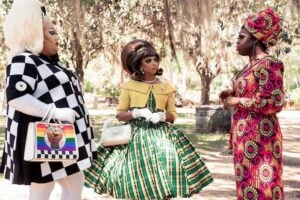
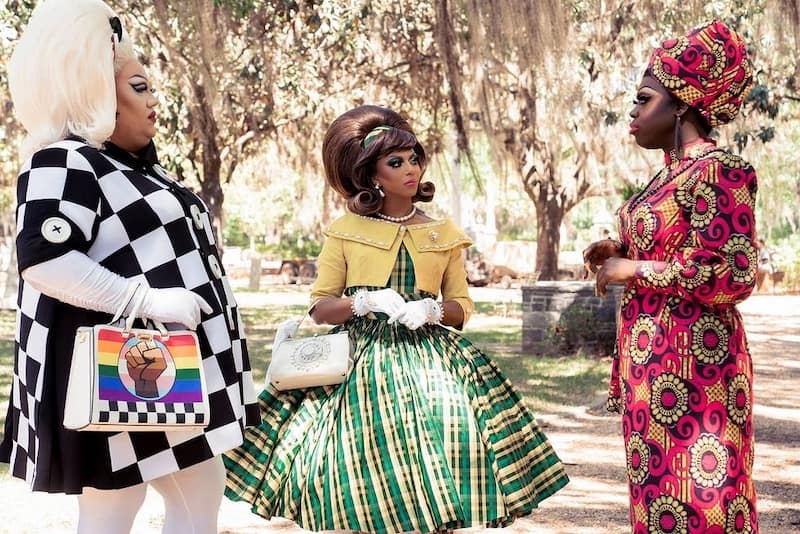
Just in time for National Coming Out Day, HBO’s masterful docuseries We’re Here returns for a second season of trauma, triumph and, of course, tucking.
Hosted by RuPaul’s Drag Race alums Shangela, Eureka and Bob the Drag Queen, the series sends the queens to small towns across America to empower the local queer community with an All Stars-worthy drag performance. It’s much more than wigs and lashes, though. The first season took an unflinching look at suicide, drug use and multiple forms of discrimination and isolation facing queer people.
The tone is resolutely positive, but the show leans into nuance in a way few conventional reality-TV shows dare. Moments of intersectionality between queerness and race or income are brought to the forefront, rather than glazed over, and tidy, happy endings are never guaranteed.
‘We’re Here’ is no frivolous “yas, queen!” kiki to pop in between episodes of Untucked. … it’s a heavy watch…but the show’s signature style really keeps it all from becoming too bleak.
There’s something deliciously ironic about the notion of mining for authenticity in an art form dedicated to artifice. It’s certainly not impossible — RuPaul’s Drag Race has sashayed across that tightrope to great success, but, remember, that show started as much more biting satire.
Instead of weaponizing drag’s ability to skewer or stun, We’re Here focuses on drag’s role as a crucial meeting place for the queer community and its supporters. It’s less about drag as an art form and more about the powerful feeling of being at a drag show, drink in hand, wagging your finger, shrieking in unison with the crowd as a queen slams the floor. It’s not just their drag children’s empowering embrace of a character; it’s about being witnessed performing as that character.
…there’s no trace of any of the cheesy reality-TV (or makeover) cliche’s from basic cable’s earlier forays into the format.
Don’t be mistaken: We’re Here is no frivolous “yas, queen!” kiki to pop in between episodes of Untucked. Despite the presence of the (dependably charming and hilarious) hosts, it’s a heavy watch. (Though, don’t worry, there are plenty of lewks to gag over.) Bob, Shangela and Eureka can’t help but inject some humor into the proceedings, but it’s the show’s signature style that really keeps it all from becoming too relentlessly bleak.
Peppered with high-impact, neon title cards and featuring music from queer artists and iconic favorites, there’s no trace of any of the cheesy reality-TV (or makeover) cliche’s from basic cable’s earlier forays into the format. The resulting product blends some of TV’s strongest storytelling with a compellingly cool stylistic package.
We spoke to co-creators (and real life couple) Johnnie Ingram and Stephen Warren about their approach and what makes We’re Here so special.
See what they had to say below, and don’t miss the second season of We’re Here tonight at 9 p.m. Eastern on HBO.
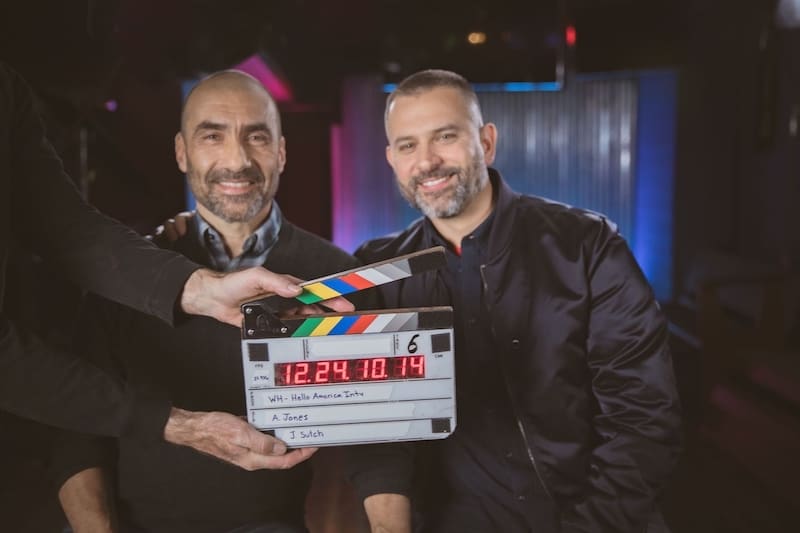
What really strikes me about ‘We’re Here’ is that it has very carefully considered tone. How did you go about establishing that early on?
Johnnie Ingram: I think, personally, the tone of the show is pretty heavy if you take out all the fun sort of cards and you take out the drag show and the entrance. I equate it to queer life. Sometimes, for some people, it can be very heavy. But what is really great about queer life, if you go to the gay bar, you see a drag show and then like [claps] you get the moment of being able to brush off the day and just be able to celebrate yourself, put your hands in the air and be your authentic self. In carefully crafting this show, we really wanted to ground these are real people, they’re real lives, we want that authenticity, but the authenticity, if you watch it wall to wall, is a hard watch. What it’s like is these beats in between, and the opening and then the drag show. It’s almost like queer life; you need a beat of levity to get through all the hard stuff.
Stephen Warren: All our song choices, wardrobe choices, the tone overall of what we’re trying to communicate, we are not being angry confrontational television. We are television that is led by our desire, and our showrunners’ desire, to try to show that people can connect that wouldn’t otherwise be able to connect.
The show is not afraid to leave things unresolved or not deliver what might be the expected ending. What was it like accepting that not every story would be neatly wrapped up?
SW: We are so careful about not pushing, ever. If we don’t get a story we expect, then we don’t get a story we expect. We’re going to tell the story of these people’s lives. That’s what our mission is. Going back to the first season, when we were really putting the whole show together in Gettysburg, all of us were hoping there would be a hug between [formerly homophobic mom] Erica and [daughter] Hailey. There was no hug, and then Eureka brilliantly is outside talking with Erica afterward with half their clothes on, and says, “You know, sometimes it’s just showing up that’s the first step.” That was a seminal moment for the show, because when that happened, it gave us the freedom to be able to, for the rest of the series, hopefully for years and years, people will not expect you’ve got to get that tight ending.
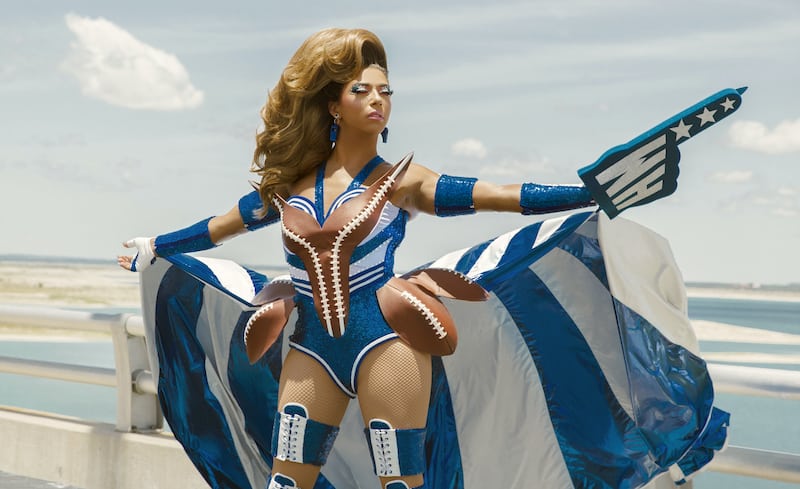
You’ve said the three queens were your first and only choices to host, because of their talent, intelligence and most of all empathy, but what’s something special each queen uniquely brings to the show?
SW: I’ll start with Shangela. Shangela brings an effervescence and a charisma and a star power that light up a room and get everyone excited, everyone excited. Whether it’s a performance, which you naturally expect, or whether it’s providing insight you wouldn’t think about. What Shangela does is she lights up a room, she just lights it up.
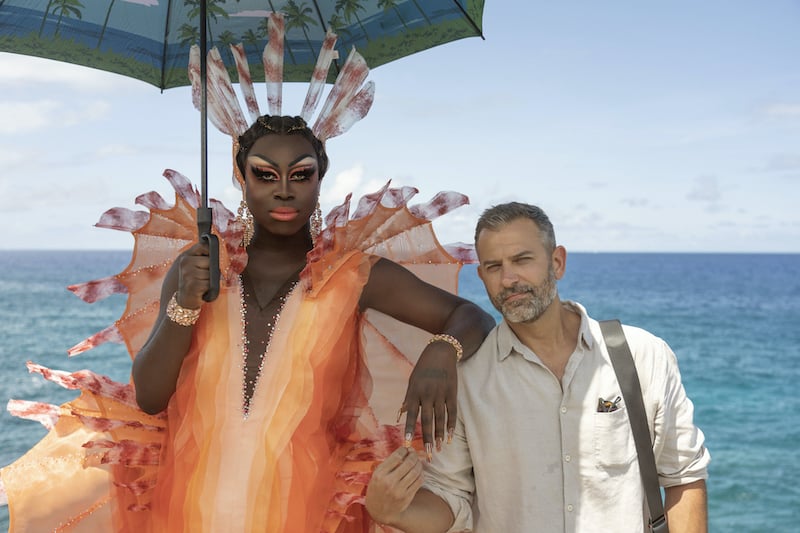
JI: And Bob, Bob is just a wonderful light that loves to listen, is thoughtful, is exactly what you see on screen. It’s Bob. Bob’s drag artistry — all of them are world class, but Bob has a really unique way of telling a story unlike the others that is incredibly special, it’s intelligent, it’s thoughtful. Bob just has access to all these amazing people, and they all love Bob so much, and you just get the best drag. They all care incredibly about their drag kids. You don’t even get the whole story how they put these looks together. Bob is just a creative, intellectual, warm soul.
SW: And then Eureka, I think Eureka is probably the biggest surprise. Eureka is able to connect with an audience, a rural audience, an audience that’s not necessarily in the city. And Eureka’s grammar isn’t always perfect, and when Eureka just talks, they’ll say things that are just so wildly appropriate and insightful. It’s shocking to hear, but they say it in a way I wouldn’t say it, but only Eureka would say it. It’s so intelligent, yet it’s so relatable. The other characteristic about, particularly Eureka and Shangela but also Bob, they can all laugh at themselves. They do not take themselves too seriously.
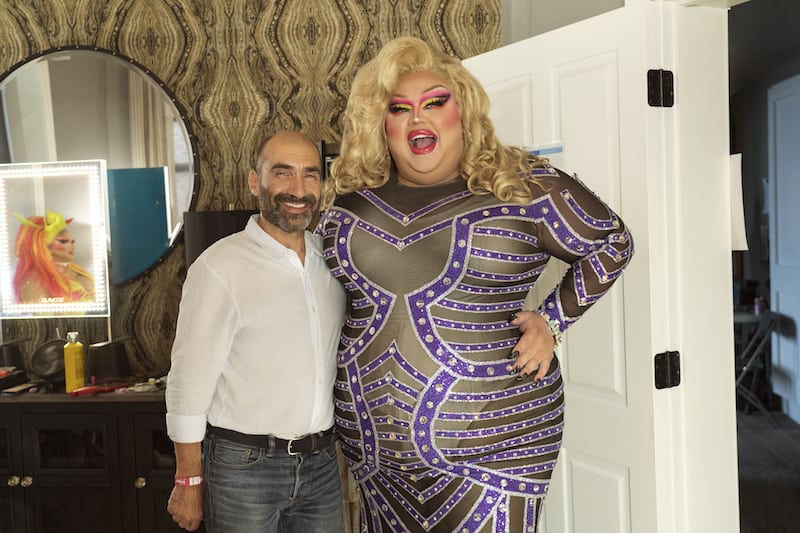
JI: They’ve all lived, they’ve navigated life. And it hasn’t been easy. I think they bring a rich experience to these places as they’ve already fought those battles. Yes, they’re not fairy godmothers, they’re not Oprah — even though sometimes I might see a little of that. It’s just people with life experience that have overcome so much and their ability, for someone who might be stuck in it and can’t get through it, they’re able to just sit down and say it gets better.
We talk a lot about representation in front of the camera, but I’d love to hear your experience behind the camera. How does your experience enhance a project like this, as members of the LGBTQ community?
SW: We have an incredibly diverse group, and it’s obviously by design. It’s many, many queer people, many women, many people of color. It’s important for us to make sure we’re doing something that is reflective of our values.
JI: I think it’s important you see a reflection of who you are behind the camera as well as what you’re seeing in front of the camera. That is something we fight for, we make sure it is very well known. If there is something that someone may or may not understand, for example, if we are telling a lot of trans stories in this particular episode, we may have some people that we don’t know exactly where their education level is on the subject matter. So, we bring in resources to make sure we all understand them as human beings. We’re talking thoughtfully, using the right pronouns, and understanding why we’re using the right pronouns. Between race, sexuality, gender, we have a full spectrum behind the scenes, of course in front of the camera, as well. It’s incredibly important to us.
How has working on We’re Here changed you personally?
JI: We’re just so grateful to have created a platform for other people to tell their stories. Getting to know a lot of these people across the country, it’s created a family. We’re already family, because we’re part of the LGBTQ community, but it’s nice to actually see some of our family members and connect with them and expand our family. Social media and things have made it a little harder for us to feel as connected. I think sometimes it sort of forces us in silos. It’s been a real, true experience to get out of that, and get out of the chaos of opening your phone and everyone is screaming at the top of their lungs at whatever it is they’re trying to scream and actually talk to people and really, truly connect is life-changing for us, because you just get the reward of feeling human again, versus being controlled by your device. It has been incredibly life-changing.


Recommended Comments
There are no comments to display.